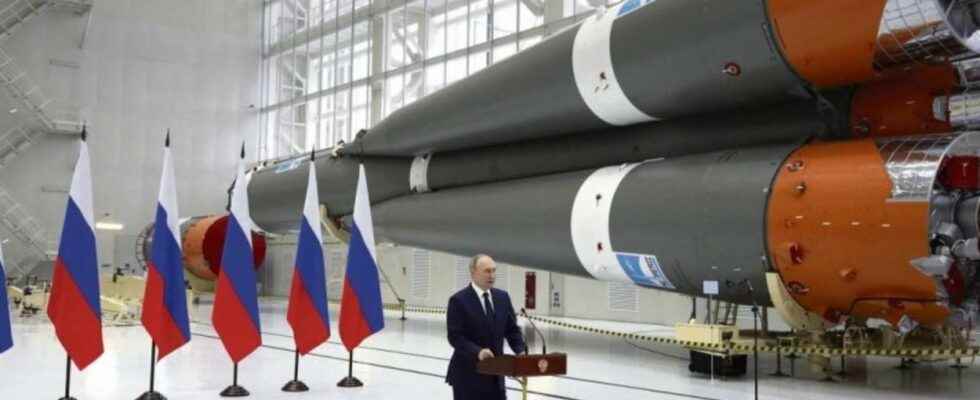L’space exploration takes on the appearance of the Cold War. On April 12, Vladimir Putin made his first outing from Moscow since the start of the war in Ukraine, on February 24, 2022. He was visiting his Belarusian counterpart, Alexander Lukashenko, the two heads of state making a televised intervention since Vostochny Cosmodromeeast of Russia.
On this highly symbolic date, marking the 61st anniversary of the first manned space flight by Yuri GagarinVladimir Putin wished to recall importance of russia in the field of space conquest and announced the return of lunar missions from 2022. The space agency Roscosmos should coordinate the Luna 25 mission, a robotic scientific mission to study the Moon. It will be the first Russian probe to land on our natural satellite since 1976 and the Luna 24 mission.
Back to the future
The Russian News Agency RIA Novosti revealed on April 8 that Roscosmos planned to launch the Luna 25 probe on August 22, 2022. If the mission has already experienced delays, Vladimir Putin reportedly asked the space agency’s director general, Dmitry Rogozin, that the probe will be ready before September according to the Tass news agency. Luna 25 could effectively mean a Russian comeback in the aerospace field, the sector having suffered a deep economic crisis induced by thecollapse of the Soviet bloc in 1991.
The first sketches for Luna 25 emerging in 1997. The project, then called “Luna Glob”, was formalized in 2005 and the probe was to take off for the Moon in 2012. But while the delays were linked, the failure of Fobos-Grunt mission to Mars results in a postponement of Luna 25 to 2016. Luna 25 will be launched from the Vostochny cosmodrome with a Soyuz 2.1b and will land near the South Pole after five days of travel.
Once on the moon, Luna 25 will engage in various experiments on the lunar soil. The main objectives relate to the analysis of the regolith, covering the entire surface of the Moon with a layer of white dust. The probe will also be able to observe the thermal variations of the regolith in the region, which could provide clues to researchers on the potential presence of water in the inner layers of the Moon.
Russia goes it alone
The Luna 25 mission was to take place in collaboration with the European Space Agency (ESA), but the war triggered by Russia got the better of scientific collaborations between this country and Western space institutions. On April 13, ESA said it was withdrawing Luna missions 25, 26 and 27. A new setback, while the ExoMars mission also suffered the thunderbolts geopolitical tensions with Russia and will surely not leave in 2022.
It is difficult to predict whether Roscosmos will meet its deadlines and succeed in launching Luna 25 in August. Most specialists agree that landing on the Moon is a perilous task. But the Luna 25 mission is of major importance for Russia, and could be a first milestone for cooperation with China on the construction of the permanent lunar base, theInternational Lunar Research Station (ILRS), which is expected to start in 2026.
Support an editorial team committed to popularizing science on Patreon!
Our mission ? Return the knowledge accessible to everyone.
We produce our own articles, investigations and reports every day, all on a human scale. Support us in this approach and this ambition.
Subscribe to Futura on Patreon!
Two subscription plans are available to you with the following advantages:
- ” Futura ad-free »: get guaranteed ad-free access to the entire site for €3.29/month (+VAT).
- ” I participate in the life of Futura »: in addition to access without advertising, take part in the life of our independent media (votes, new content, surveys, etc.) for €6.29/month (+VAT).
Interested in what you just read?
